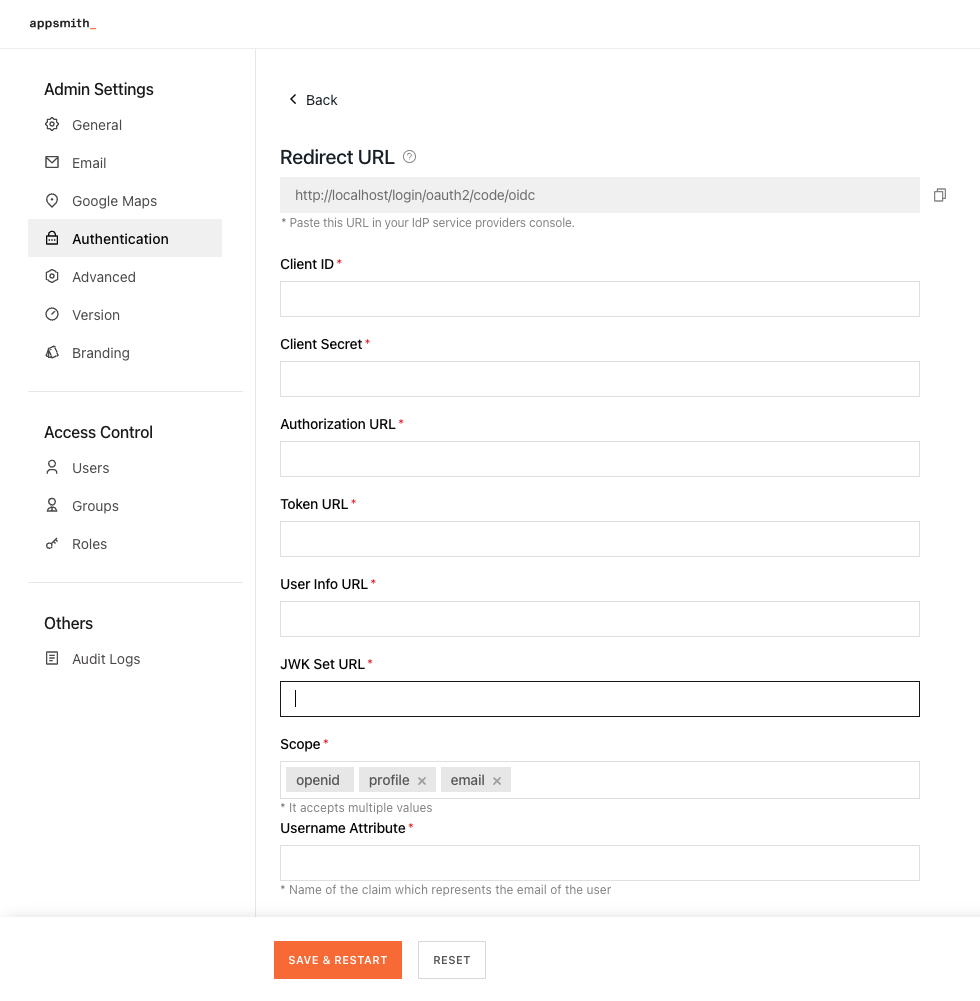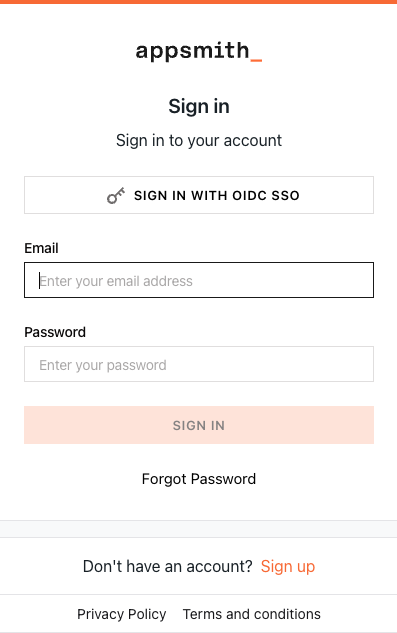Auth0
To configure Appsmith to use Auth0 as an OIDC provider, follow the steps below:
Prerequisites
- A self-hosted Appsmith instance. See the installation guides for installing Appsmith.
- Before setting up Single Sign-On (SSO), ensure that you have already configured a custom domain for your instance.
- In Appsmith, go to Admin Settings > Authentication and click Enable on OIDC.
- Copy the Redirect URL from the OIDC configuration page to add it when creating the application in Auth0.

Create application in Auth0
-
Log in to your Auth0 account and go to Applications > Create Application.
-
In the Create application modal, select Regular Web Application and click Create.
-
Once your application is created, you're taken to the Quick Start screen. Go to the Settings tab.
-
In the basic information section, copy the Client ID and Client Secret to add them later in the OIDC configurations in Appsmith.
-
Scroll down to the Application URIs and paste the Redirect URL copied from the OIDC configuration in Appsmith in the Allowed Callback URLs field.
-
On the Settings tab, go to Advanced Settings > Endpoints. Copy the following URls from the OAuth section to add them later in the OIDC configurations in Appsmith:
-
OAuth Authorization URL
-
OAuth Token URL
-
OAuth User Info URL
-
JSON Web Key Set
- Click Save Changes.
Register Auth0 in Appsmith
To complete the OIDC configuration, you must register the identity provider on Appsmith. Go to Admin Settings > Authentication > OIDC, and follow the steps below:
-
Add the Client ID and Client Secret copied from the Auth0 application into the respective fields.
-
Add the URLs copied from the Auth0 application into OIDC configurations in Appsmith as per the table below:
OIDC configuration field Auth0 URL Authorization URL OAuth Authorization URL Token URL OAuth Token URL User Info URL OAuth User Info URL JWK Set URL JSON Web Key Set -
In the Scope box, specify the scopes to be used by the application during authentication to authorize access to a user's details. By default, there are three scopes -
openid,email, andprofile.Appsmith needs
openidandemailas mandatory scopes. It’s also highly recommended to use theoffline_accessscope to avoid errors related to expired access tokens and excessive re-login requests. For more information, see Auth0 documentation. -
In the Username Attribute box, specify the name of the claim which represents the email of the user. The default value is
email.
Once you have added the details, click the SAVE & RESTART button to save the configuration and restart the instance.
After the Appsmith instance restarts, try logging in again to your account. You'll see a login screen with the SIGN IN WITH OIDC SSO button.


